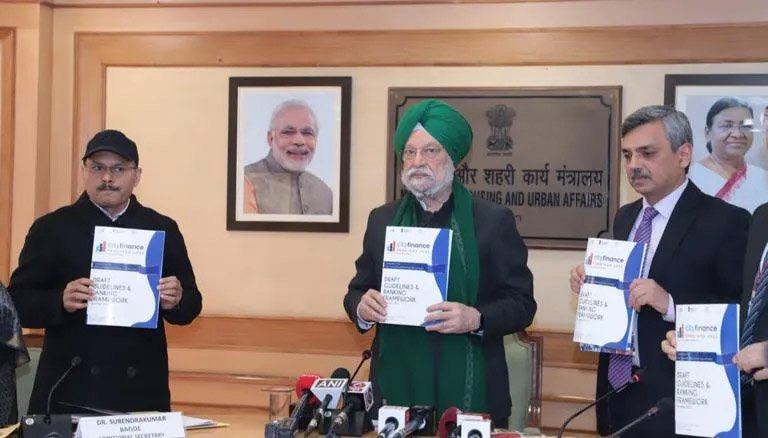NEW DELHI, Dec 28 (PTI): Union minister of Housing and Urban Affairs Hardeep Singh Puri released on Wednesday draft guidelines for a new ranking system of cities based on financial performance and beautification.
“India has embarked on the most ambitious plan for urban rejuvenation undertaken anywhere in the world. A healthy sense of competition gives the best performing cities a sense of pride,” he said at the launch event.
City Finance Rankings 2022 aim to evaluate, recognise and reward urban local bodies (ULBs) on the basis of their strength across three financial parameters — resource mobilisation, expenditure performance and fiscal governance systems.
According to Manoj Joshi, secretary of the ministry of Housing and Urban Affairs, it is also an effort to analyse and help the ULBs in identifying areas in their financial performance where they can make further improvements, to be able to deliver quality infrastructure and services, and hence a good quality of life to its citizens.
“The city finance rankings will evaluate and assess each participating ULB on 15
indicators and metrics across three key municipal finance criteria which, put together, will help in identifying the most financially sustainable and accountable cities,” he said.
“Robust finances of ULBs are crucial for realising the vision of ULBs as a viable third tier of government and capitalising on the potential that cities represent for growth and development. Currently, municipal revenues in India are less than one per cent of the GDP, with high dependence on inter-governmental transfers, and own revenues accounting for less than half the total revenue of ULBs.”
“This is reflected in the chronic deficits that ULBs run and, also among other
things, in their inability to fund infrastructural demand or even meet the operation and maintenance (O&M) requirements,” Joshi added.
The “City Beauty Competition” has been conceived and designed as a platform to evaluate, recognise and reward wards and public spaces in cities across five broad pillars — aesthetics, accessibility, amenities, activities and ecology.
“It aims to encourage cities to conserve their rich traditional heritage, streamline their delivery mechanisms for efficient provisioning of basic infrastructure, develop community participation, imbibe the tenets of ecological conservation, and promote local economy,” the secretary said.
The competition would felicitate most beautiful wards, both at the city and state levels, while cities would be awarded for their most beautiful public places, waterfronts, green spaces, tourist and heritage spaces and market and commercial places.
The cities have until January 15 to submit their comments before the guidelines are finalised and issued by January 30.







